-
 Bitcoin
Bitcoin $101,898.5005
-0.75% -
 Ethereum
Ethereum $2,258.1125
-1.07% -
 Tether USDt
Tether USDt $1.0004
0.01% -
 XRP
XRP $2.0178
-2.93% -
 BNB
BNB $624.0243
-1.53% -
 Solana
Solana $134.3298
-0.90% -
 USDC
USDC $0.9999
0.01% -
 TRON
TRON $0.2675
-2.05% -
 Dogecoin
Dogecoin $0.1538
-1.96% -
 Cardano
Cardano $0.5482
-1.11% -
 Hyperliquid
Hyperliquid $35.5636
5.45% -
 Bitcoin Cash
Bitcoin Cash $453.4902
-1.66% -
 Sui
Sui $2.5134
-2.97% -
 UNUS SED LEO
UNUS SED LEO $9.1292
1.77% -
 Chainlink
Chainlink $11.8457
-1.60% -
 Stellar
Stellar $0.2312
-2.73% -
 Avalanche
Avalanche $16.9721
0.29% -
 Toncoin
Toncoin $2.7549
-3.82% -
 Shiba Inu
Shiba Inu $0.0...01081
-1.10% -
 Litecoin
Litecoin $80.8250
-0.71% -
 Hedera
Hedera $0.1374
0.21% -
 Monero
Monero $305.4827
-2.36% -
 Ethena USDe
Ethena USDe $1.0006
0.00% -
 Dai
Dai $1.0000
-0.01% -
 Polkadot
Polkadot $3.2085
-3.12% -
 Bitget Token
Bitget Token $4.0845
-3.13% -
 Uniswap
Uniswap $6.3353
-1.63% -
 Pi
Pi $0.5085
-0.70% -
 Pepe
Pepe $0.0...08913
-3.82% -
 Aave
Aave $232.7090
-0.58%
How to define the MFI overbought and oversold areas? How many values are considered overbought?
The MFI, ranging from 0 to 100, helps crypto traders identify overbought (>80) and oversold (<20) conditions, aiding in informed trading decisions.
May 23, 2025 at 08:21 am
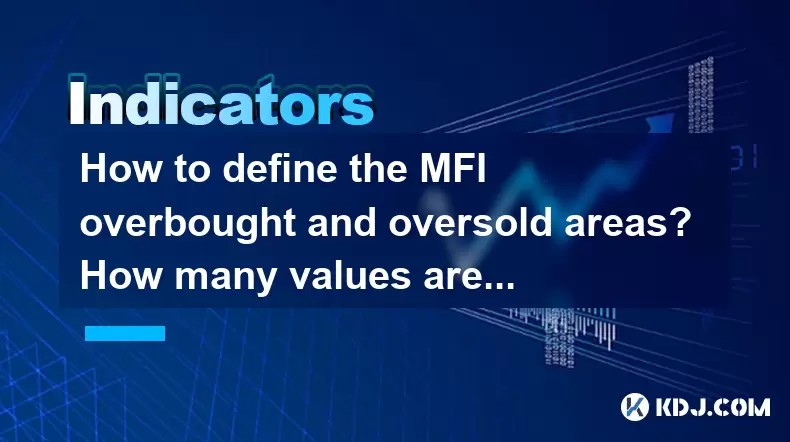
The Money Flow Index (MFI) is a popular technical indicator used by traders in the cryptocurrency market to gauge the buying and selling pressure over a specified period. It combines price and volume data to provide insights into potential overbought and oversold conditions. Understanding how to define the MFI overbought and oversold areas is crucial for making informed trading decisions.
Understanding the Money Flow Index (MFI)
The MFI is calculated using a formula that considers both the price and the volume of a cryptocurrency. It ranges from 0 to 100, making it easy to interpret. The indicator is based on the premise that the more money flowing into a security, the more likely it is to be overbought, and conversely, the less money flowing in, the more likely it is to be oversold.
To calculate the MFI, you need to follow these steps:
- Calculate the Typical Price (TP): This is the average of the high, low, and close prices for each period. The formula is: TP = (High + Low + Close) / 3.
- Calculate the Raw Money Flow (RMF): Multiply the Typical Price by the volume for the period. RMF = TP * Volume.
- Determine the Positive and Negative Money Flow: If the Typical Price of the current period is higher than the previous period, the RMF is considered positive. If it is lower, it is considered negative.
- Calculate the Money Ratio (MR): This is the ratio of the sum of positive money flows over a specified period to the sum of negative money flows over the same period. MR = Sum of Positive Money Flow / Sum of Negative Money Flow.
- Calculate the MFI: Finally, the MFI is calculated using the formula: MFI = 100 - (100 / (1 + MR)).
Defining Overbought and Oversold Areas
The MFI helps traders identify potential reversal points in the market. An asset is generally considered overbought when the MFI value exceeds 80, and oversold when the MFI value falls below 20. These thresholds are widely accepted but can be adjusted based on the specific asset and market conditions.
Overbought Values in MFI
In the context of the MFI, overbought values are those that exceed 80. This indicates that the asset may have been pushed too high too quickly and could be due for a price correction. Traders often look for other confirming signals, such as bearish candlestick patterns or divergence between the MFI and price, before making a decision to sell.
Using MFI to Make Trading Decisions
Traders use the MFI to make informed decisions about when to enter or exit a position. When the MFI reaches or exceeds 80, it may be a signal to consider selling or taking profits. Conversely, when the MFI falls to 20 or below, it might be a good time to consider buying or increasing a position. However, it is essential to use the MFI in conjunction with other indicators and analysis methods to increase the accuracy of your trading signals.
Practical Application of MFI in Cryptocurrency Trading
To apply the MFI effectively in cryptocurrency trading, follow these steps:
- Select a Time Frame: Choose a time frame that aligns with your trading strategy, whether it's short-term or long-term.
- Plot the MFI on Your Chart: Use a trading platform that supports the MFI indicator and plot it on your chosen cryptocurrency chart.
- Monitor the MFI Values: Keep an eye on the MFI values, especially when they approach or exceed 80 or fall below 20.
- Look for Confirmation: Before acting on an MFI signal, look for additional confirmation from other indicators or price action. For example, if the MFI is over 80 and the price forms a bearish reversal pattern, it may strengthen the sell signal.
- Execute Trades: Based on your analysis, execute buy or sell orders accordingly, keeping in mind your risk management rules.
Limitations of MFI
While the MFI is a powerful tool, it is not without its limitations. False signals can occur, especially in highly volatile markets like cryptocurrencies. The MFI can remain in overbought or oversold territory for extended periods, which may lead to premature trading decisions. Therefore, it is crucial to use the MFI as part of a broader trading strategy and not rely on it solely.
Combining MFI with Other Indicators
To enhance the effectiveness of the MFI, traders often combine it with other technical indicators. Commonly used indicators include the Relative Strength Index (RSI), Moving Averages, and the MACD (Moving Average Convergence Divergence). By using multiple indicators, traders can get a more comprehensive view of market conditions and make more accurate predictions.
Adjusting MFI Thresholds
While the standard thresholds for overbought and oversold conditions are 80 and 20, respectively, some traders may adjust these levels based on their experience and the specific cryptocurrency they are trading. For example, in a highly volatile market, traders might use 85 for overbought and 15 for oversold to filter out noise and focus on more significant movements.
Frequently Asked Questions
Q: Can the MFI be used for all cryptocurrencies?
A: Yes, the MFI can be applied to any cryptocurrency, but its effectiveness may vary depending on the liquidity and volatility of the asset. It is essential to backtest the MFI on historical data for each cryptocurrency to understand its performance.
Q: How often should I check the MFI?
A: The frequency of checking the MFI depends on your trading style. For day traders, monitoring the MFI throughout the trading day is advisable. For swing traders or long-term investors, checking the MFI at the end of each trading day or week may be sufficient.
Q: Is the MFI more effective in bullish or bearish markets?
A: The MFI can be effective in both bullish and bearish markets, but its signals may be more reliable in trending markets. In a strong uptrend, the MFI might remain in overbought territory for longer periods, while in a downtrend, it might stay oversold. It's crucial to consider the broader market context when interpreting MFI signals.
Q: Can the MFI be used for automated trading strategies?
A: Yes, the MFI can be incorporated into automated trading strategies. Many trading platforms and software allow for the integration of the MFI with other indicators to create custom algorithms. However, it's important to thoroughly test and optimize any automated strategy to account for the nuances of different market conditions.
Disclaimer:info@kdj.com
The information provided is not trading advice. kdj.com does not assume any responsibility for any investments made based on the information provided in this article. Cryptocurrencies are highly volatile and it is highly recommended that you invest with caution after thorough research!
If you believe that the content used on this website infringes your copyright, please contact us immediately (info@kdj.com) and we will delete it promptly.
- Cryptocurrencies, Coingecko, and Trending Tokens: What's Hot Now?
- 2025-06-23 23:05:12
- Bitcoin, Meerkat, and Onchain Engagement: A New Era of Crypto
- 2025-06-23 23:25:12
- Cloud Mining, Bitcoin, and XRP: A 2025 Perspective
- 2025-06-23 23:25:12
- Neo Pepe Coin: Meme Crypto with Explosive Potential?
- 2025-06-23 23:45:12
- FUNToken: Decoding Past Trends and Getting Started in the Gaming Crypto Sphere
- 2025-06-23 22:25:12
- Eyenovia Goes Crypto: A HYPE Treasury and Potential Rebrand
- 2025-06-23 23:45:12
Related knowledge

Is it contradictory that the moving average system is arranged in a bullish pattern but the DMI shows a decline in trend strength?
Jun 23,2025 at 11:43pm
Understanding the Moving Average and DMI RelationshipIn cryptocurrency trading, technical analysis plays a crucial role in identifying potential trends and making informed decisions. Two of the most commonly used indicators are the Moving Average (MA) and the Directional Movement Index (DMI). While both tools aim to provide insight into market direction...

What is the significance of the gap formed by the gap opening not being filled within five days?
Jun 23,2025 at 09:42pm
Understanding Gaps in Cryptocurrency TradingIn the world of cryptocurrency trading, a gap refers to a situation where the price of an asset jumps from one level to another without any trading activity occurring between those two levels. This often happens over weekends or holidays when the market is closed, and significant news or events occur that impa...
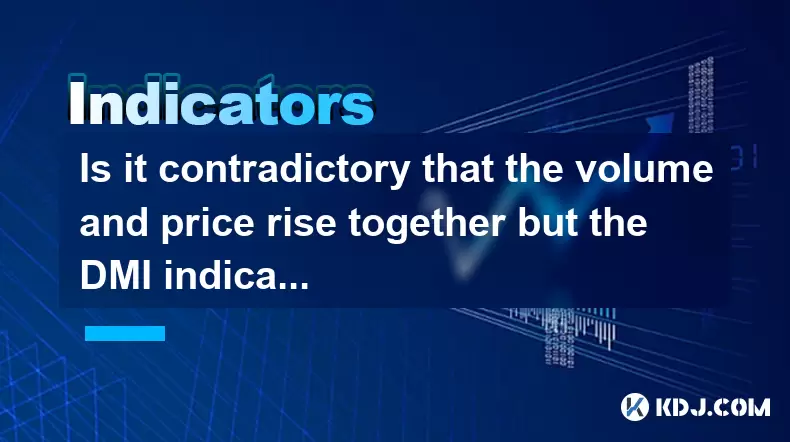
Is it contradictory that the volume and price rise together but the DMI indicator shows that the trend strength decreases?
Jun 24,2025 at 01:00am
Understanding the Relationship Between Volume, Price, and DMIIn the world of cryptocurrency trading, it is common for traders to analyze multiple indicators simultaneously to form a comprehensive view of market conditions. Volume and price are two of the most basic and widely used metrics in technical analysis. When both volume and price rise together, ...
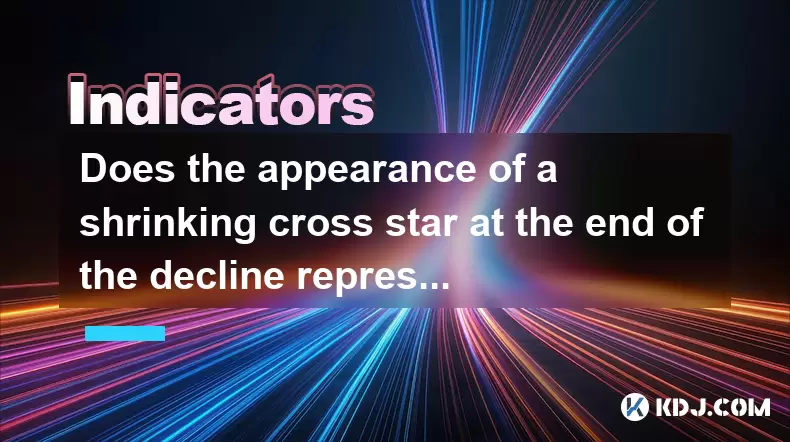
Does the appearance of a shrinking cross star at the end of the decline represent a signal to stop the decline?
Jun 24,2025 at 12:14am
Understanding the Shrinking Cross Star PatternIn the world of cryptocurrency trading, candlestick patterns play a crucial role in technical analysis. One such pattern is the shrinking cross star, which often appears at the end of a downtrend. This pattern consists of a candle with a small body, typically appearing after a series of bearish candles, and ...
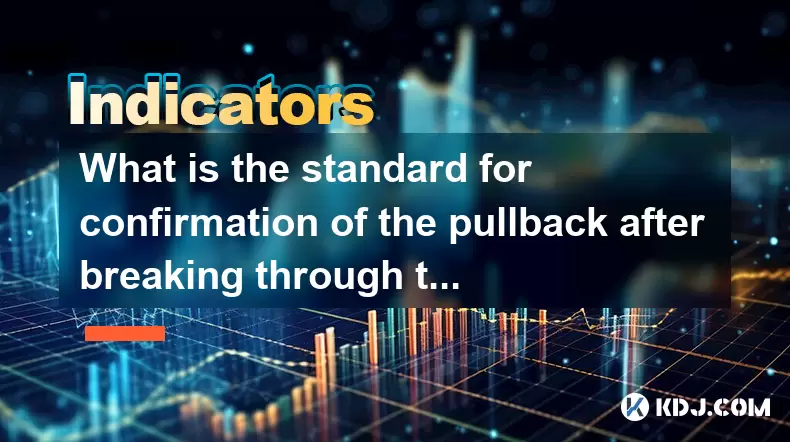
What is the standard for confirmation of the pullback after breaking through the neckline with large volume?
Jun 23,2025 at 11:28pm
Understanding the Neckline in Technical AnalysisIn technical analysis, the neckline is a critical support or resistance level that appears in chart patterns such as head and shoulders, double tops, and double bottoms. It typically connects two or more lows (in the case of a head and shoulders top) or highs (in the case of a head and shoulders bottom). W...
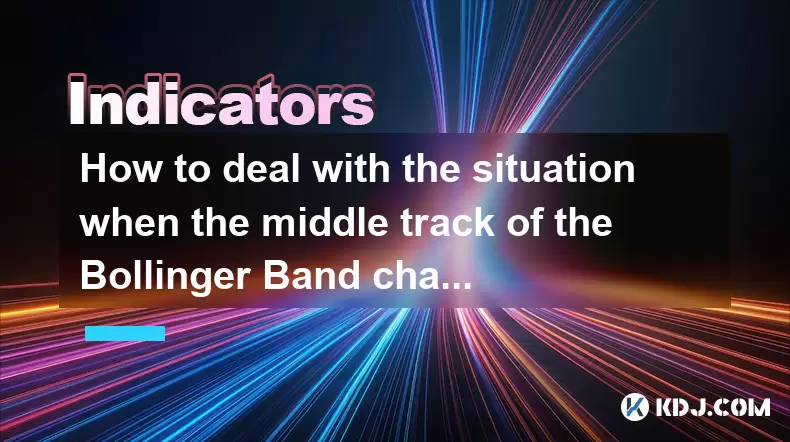
How to deal with the situation when the middle track of the Bollinger Band changes from support to resistance?
Jun 23,2025 at 11:22pm
Understanding the Bollinger Band Middle TrackThe Bollinger Band is a widely used technical indicator in cryptocurrency trading. It consists of three lines: the upper band, the lower band, and the middle track, which is typically a 20-period simple moving average (SMA). Traders often rely on the middle track as a dynamic support or resistance level. Howe...

Is it contradictory that the moving average system is arranged in a bullish pattern but the DMI shows a decline in trend strength?
Jun 23,2025 at 11:43pm
Understanding the Moving Average and DMI RelationshipIn cryptocurrency trading, technical analysis plays a crucial role in identifying potential trends and making informed decisions. Two of the most commonly used indicators are the Moving Average (MA) and the Directional Movement Index (DMI). While both tools aim to provide insight into market direction...

What is the significance of the gap formed by the gap opening not being filled within five days?
Jun 23,2025 at 09:42pm
Understanding Gaps in Cryptocurrency TradingIn the world of cryptocurrency trading, a gap refers to a situation where the price of an asset jumps from one level to another without any trading activity occurring between those two levels. This often happens over weekends or holidays when the market is closed, and significant news or events occur that impa...

Is it contradictory that the volume and price rise together but the DMI indicator shows that the trend strength decreases?
Jun 24,2025 at 01:00am
Understanding the Relationship Between Volume, Price, and DMIIn the world of cryptocurrency trading, it is common for traders to analyze multiple indicators simultaneously to form a comprehensive view of market conditions. Volume and price are two of the most basic and widely used metrics in technical analysis. When both volume and price rise together, ...

Does the appearance of a shrinking cross star at the end of the decline represent a signal to stop the decline?
Jun 24,2025 at 12:14am
Understanding the Shrinking Cross Star PatternIn the world of cryptocurrency trading, candlestick patterns play a crucial role in technical analysis. One such pattern is the shrinking cross star, which often appears at the end of a downtrend. This pattern consists of a candle with a small body, typically appearing after a series of bearish candles, and ...

What is the standard for confirmation of the pullback after breaking through the neckline with large volume?
Jun 23,2025 at 11:28pm
Understanding the Neckline in Technical AnalysisIn technical analysis, the neckline is a critical support or resistance level that appears in chart patterns such as head and shoulders, double tops, and double bottoms. It typically connects two or more lows (in the case of a head and shoulders top) or highs (in the case of a head and shoulders bottom). W...

How to deal with the situation when the middle track of the Bollinger Band changes from support to resistance?
Jun 23,2025 at 11:22pm
Understanding the Bollinger Band Middle TrackThe Bollinger Band is a widely used technical indicator in cryptocurrency trading. It consists of three lines: the upper band, the lower band, and the middle track, which is typically a 20-period simple moving average (SMA). Traders often rely on the middle track as a dynamic support or resistance level. Howe...
See all articles
























































































